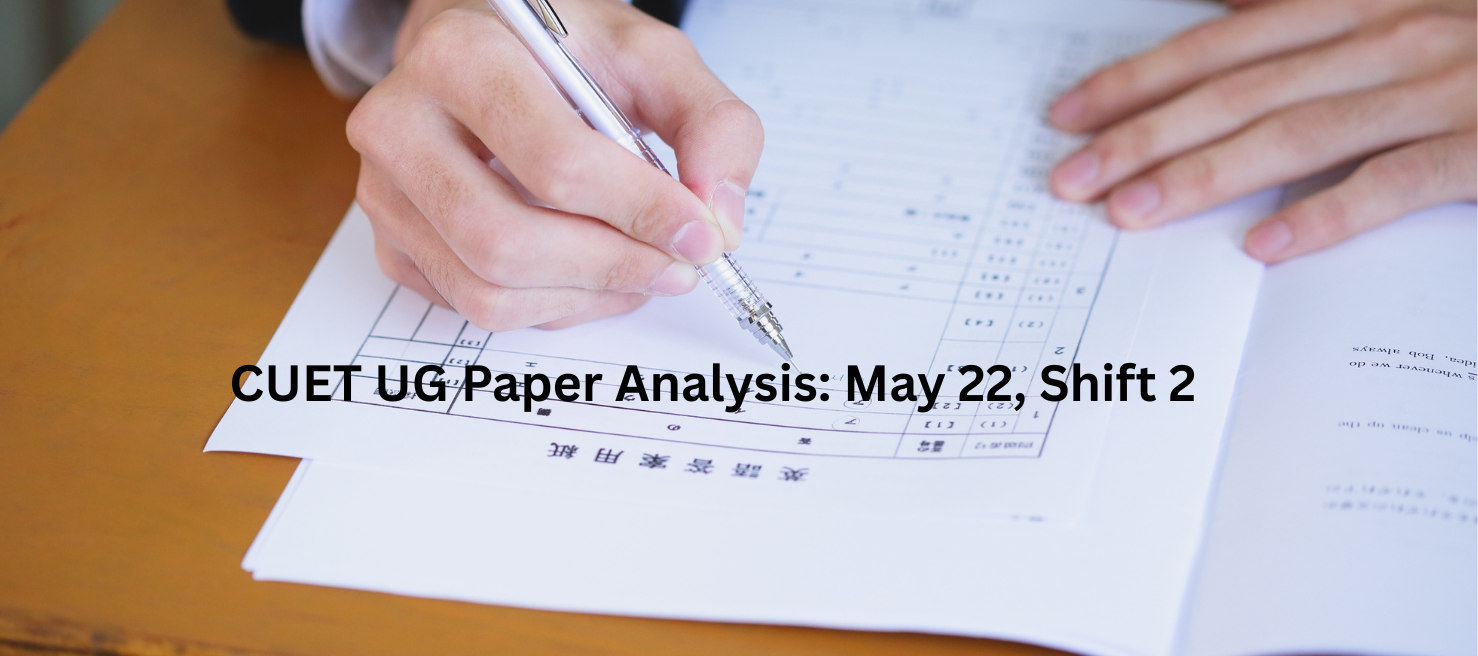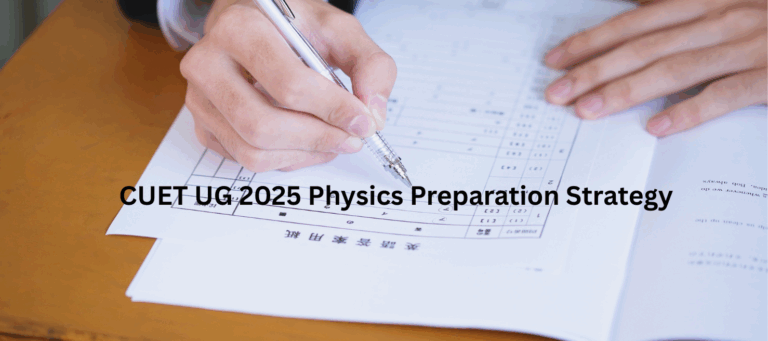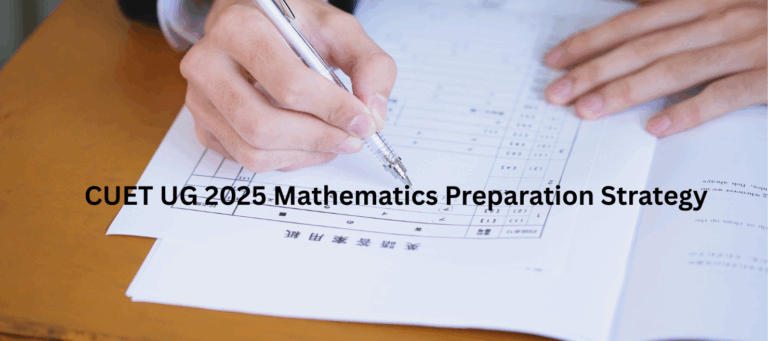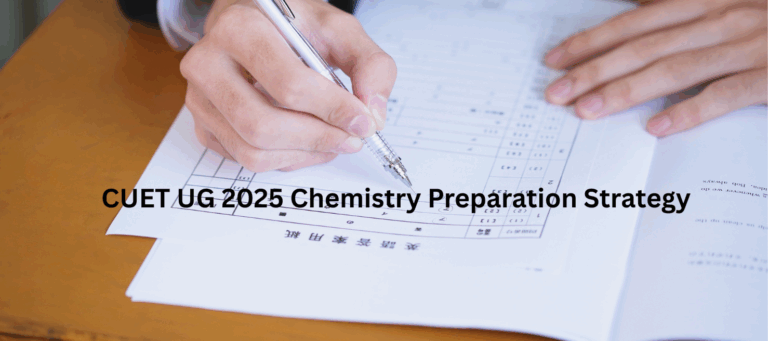
The CUET UG 2025 exam for Shift 2 on May 22 covered a diverse range of subjects, including the General Aptitude Test (GAT), English, History, Economics, Accountancy, and Business Studies. The overall difficulty level was reported as easy to moderate, with students finding the papers manageable but requiring careful time management.
The GAT section featured a mix of match-the-column and chronology-based questions, emphasizing quantitative aptitude and reasoning skills. English tested vocabulary, rephrasing, and reading comprehension, with passages varying in complexity. History and Economics included questions focused on key events, chronological order, and conceptual clarity. Accountancy and Business Studies covered fundamental principles and practical applications relevant to the class 11-12 curricula. Time management was crucial, as some sections, especially Quant and Reasoning in GAT, demanded careful pacing.
The analysis of CollegeDost provides a detailed breakdown of each subject, highlighting key topics, question patterns, and student feedback to assist future candidates in strategizing their preparation effectively.
- May 13th CUET UG Paper Analysis Shift 1
- May 13th CUET UG Paper Analysis Shift 2
- May 14th CUET UG Paper Analysis Shift 1
- May 14th CUET UG Paper Analysis Shift 2
- May 15th CUET UG Paper Analysis Shift 1
- May 15th CUET UG Paper Analysis Shift 2
- May 16th CUET UG Paper Analysis Shift 1
- May 16th CUET UG Paper Analysis Shift 2
- May 19th CUET UG Paper Analysis Shift 1
- May 19th CUET UG Paper Analysis Shift 2
- May 20th CUET UG Paper Analysis Shift 1
- May 20th CUET UG Paper Analysis Shift 2
- May 21st CUET UG Paper Analysis Shift 1
- May 21st CUET UG Paper Analysis Shift 2
- May 22nd CUET UG Paper Analysis Shift 1
- May 23rd CUET UG Paper Analysis Shift 1
- May 23rd CUET UG Paper Analysis Shift 2
- May 24th CUET UG Paper Analysis Shift 1
- May 24th CUET UG Paper Analysis Shift 2
- May 26th CUET UG Paper Analysis Shift 1
- May 26th CUET UG Paper Analysis Shift 2
- May 27th CUET UG Paper Analysis Shift 1
- May 27th CUET UG Paper Analysis Shift 2
- May 28th CUET UG Paper Analysis Shift 1
- May 28th CUET UG Paper Analysis Shift 2
- May 29th CUET UG Paper Analysis Shift 1
- May 29th CUET UG Paper Analysis Shift 2
- May 30th CUET UG Paper Analysis Shift 1
- May 30th CUET UG Paper Analysis Shift 2
- May 31st CUET UG Paper Analysis Shift 1
- June 2nd CUET UG Paper Analysis Shift 1
- June 2nd CUET UG Paper Analysis Shift 2
- June 3rd CUET UG Paper Analysis Shift 1
- June 3rd CUET UG Paper Analysis Shift 2
CUET UG 2025 Exam Overview
Below is the exam overview of CUET UG 2025.
| Exam Particulars | Exam Details |
| Total Subjects Offered | 37 (13 Languages + 23 Domain Subjects + 1 General Aptitude Test) |
| Medium | 13 Indian languages (Assamese, Bengali, English, Gujarati, Hindi, Kannada, Malayalam, Marathi, Punjabi, Odia, Tamil, Telugu, and Urdu) |
| Subjects to Choose | Up to 5 subjects |
| Total Marks of CUET Exam | 250 |
| Questions per Subject | 50 Compulsory Questions |
| Marking Scheme | +5 for correct answer, -1 for incorrect answer, and no marks for unattempted questions |
| Exam Mode | CBT Mode |
| Duration | 60 minutes per subject |
Where To Check CUET UG 2025 Paper Analysis
CollegeDost provides a detailed, student-verified breakdown for every subject and shift, including expert insights, question patterns, and difficulty levels. Our analysis is designed to help you understand the exam better and plan your preparation smartly.
👉 Check CUET UG 2025 Exam Analysis on CollegeDost
CUET UG 2025 Exam: Shift Timings
Check the CUET UG 2025 exam shift timings in the table below.
| CUET UG 2025 Slot Time for 22nd May | Reporting Time | Gate Closing Time | Shift Timing |
| CUET UG 2025 Shift 1 | 7 AM | 8.30 AM | 9 AM to 12 PM |
| CUET UG 2025 Shift 2 | 1 PM | 2.30 PM | 3 PM to 6 PM |
CUET Exam Pattern 2025
The CUET UG 2025 exam is structured to assess various skills across multiple subjects. Below is a detailed breakdown of the exam pattern:
| Sections | Subjects / Tests | No. of Questions | Question Type |
| Section IA | 13 different languages (any one can be chosen) | 50 | Reading Comprehension based on different types of passages – Factual, Literary, and Narrative; includes Literary Aptitude and Vocabulary |
| Section II | 23 domain-specific subjects (choose as per eligibility) | 50 | MCQs based on the NCERT Class XII syllabus |
| Section III | General Test (for programs where it’s used for admission) | 50 | General Knowledge, Current Affairs, General Mental Ability, Numerical Ability, Quantitative Reasoning (up to Grade 8 level), Logical and Analytical Reasoning |
CUET UG 2025 Exam Analysis: Based on Number of Attempts
Candidates can check the number of good attempts that they can expect in the exam from the following table.
| CUET UG Subjects | Difficulty Level | Good Attempt |
| English | Moderate | 44 |
| General Aptitude Test | Easy to Moderate | 48 |
| History | Easy | 50 |
| Political Science | Moderate | 42 |
| Economics | Easy to Moderate | 45 |
| Accountancy | Moderate to Difficult | 40 |
| Business Studies | Easy to Moderate | 46 |
CUET UG 2025 Exam Analysis: May 22 2025, Shift 2
The CUET exam date 2025 of May 22, shift 2, was conducted for the GAT, English, History, Economics, Accountancy, and Business Studies papers. As per the initial reaction of the students, the exam for the Shift 2 is considered to be Easy to moderate. Check out the subject-specific analysis and weightage of each chapter.
CUET UG 2025 GAT Paper Analysis
In the GAT paper, the students found the reasoning section covered a variety of topics like letter series, coding-decoding, and classification, along with puzzles on blood relations, directions, clocks, calendars, and embedded pictures. Numerical reasoning tested their skills in ranking and missing numbers. The general knowledge portion included questions on sustainable development, historical event sequences, and notable figures like Kalpana Chawla, along with topics on the Election Commission, books, awards, and rivers. Overall, the level was mostly moderate, allowing most students to manage the paper comfortably.
| Topics | Details / Key Points |
| Difficulty Level | Easy to Moderate |
| Reasoning | Letter Series, Coding-Decoding, Classification |
| Logical Puzzles | Blood Relations, Direction, Clock, Calendar, Embedded Pictures |
| Numerical Reasoning | Ranking, Missing Numbers |
| General Knowledge (GK) | Sustainable Development, Historical Events Order, Kalpana Chawla, Election Commission, Books, Awards, Rivers |
General Awareness-Chapterwise Weightage
This section highlights the importance and distribution of the various topics within the field of general awareness. Recognising the importance given to each chapter can enhance overall assessments related to general awareness.
| Category | Expected Questions |
| Geography | 7 |
| Science | 4 |
| Personalities | 4 |
| Polity | 3 |
| Defence | 2 |
| Awards | 2 |
| Sports | 1 |
| Currency | 1 |
| Miscellaneous | 1 |
Logical reasoning-Chapterwise Weightage
| Topic | Expected Questions |
| Visual Reasoning | 4 |
| Series | 2 |
| Coding-Decoding | 2 |
| Arrangement | 2 |
| Clocks | 2 |
| Analogy | 1 |
| Family Tree | 1 |
| Calendar | 1 |
| Data Sufficiency | 1 |
| Directions | 1 |
| Statement-Conclusion | 1 |
Numerical Ability-Chapterwise Weightage
| Topic | Expected Questions |
| Time and Work | 2 |
| Ratio | 2 |
| Simplification | 1 |
| Fractions | 1 |
| HCF-LCM | 1 |
| Problems on Age | 1 |
| Percentage | 1 |
| Profit, Loss & Discount | 1 |
| Simple Interest | 1 |
| Area | 1 |
| Volume | 1 |
| Speed, Time, Distance | 1 |
| Mean & Mode | 1 |
| Triangle | 1 |
| Trigonometry | 1 |
CUET UG 2025 English Paper Analysis
The students found the English paper to be “very good” and manageable. The Reading Comprehension section had three passages on topics like Chandrayaan and teacher comparisons, with mostly indirect questions. Vocabulary tested advanced words like reconcile and astute, including tricky homophones such as stationary/stationery. Grammar questions covered prepositions, adverbs, modals, and conditional sentences, with 5-6 questions overall. Moreover, students reported that the Idioms, phrases, and proverbs appeared mostly as matching or fill-in-the-blank. Though the rearrangement questions were tricky, students found them doable. Overall, the paper balanced challenge and fairness without being lengthy.
| Topics | Details |
| Reading Comprehension (RC) | 3 passages: Chandrayaan (4 Qs: 1 direct, 3 indirect), Narrator Comparing Teachers, Couple conversation (4 Qs: 1 direct, 3 indirect) |
| Vocabulary | Words: Reconcile, Astute, Resolute; Homophones: Stationary/Stationery, Principal/Principle; Antonyms: Lugubrious, Mellifluous; Embedded in passages; From Advanced Vocabulary sessions |
| Grammar | Prepositions (Beside, Besides), Adverbs (Never, Shortly), Modals (fill in blanks), Conditional Sentences (match columns), Rearrangement (easy), One-word substitution, Idioms & Phrases (2-3 Qs), Proverbs |
| Question Type | Mostly indirect questions in RC; grammar questions ~5-6; idioms mostly matching or fill-in; rearrangement tricky but doable |
Recommendations for Future Students: Study the Advanced Vocabulary sessions carefully, as words are repeated. Be careful with Synonyms and Antonyms to avoid confusion. If you are a slow reader, consider attempting other question types before RCs. Attempting RCs first can be beneficial if you have a good command
CUET English Chapterwise Weightage
The table below highlights the importance and distribution of different subjects within the English subject.
| Topics | Number of Questions |
| Comprehension | 15 |
| Parts of speech | 3–4 |
| Para jumbles | 3–4 |
| Synonyms and antonyms | 2–3 |
| Active/passive voice | 3–4 |
| Fill in the blanks | 3–4 |
| Incorrect/correct statement | 3–4 |
| Phrases and meaning | 5–6 |
CUET UG 2025 History Paper Analysis
In the History paper, the students found questions covering diverse topics like the Hazara Rama Temple in Hampi through picture-based prompts, and Humayun’s reign (1530–1540), including the year he came to power. However, Gandhi Ji’s movements required sequencing by dates, testing their understanding of key events like Champaran and Non-Cooperation. Questions on Harappan seals focused on the stone steatite. Moreover, students also found the constitution framing and related committees questions, along with political science questions on party leadership in 1957 Uttar Pradesh. Additionally, students encountered a question on peace and non-violence concepts from Ashoka’s inscriptions and one on the Mahabharata’s opening scene depicting Arjuna shooting an arrow. Overall, the questions blended history, politics, and culture, requiring both factual recall and interpretation.
| Topic | Details |
| Hawaram Temple (Hampi) | Picture-based question on the Hazara Rama Temple location |
| Humayun’s Reign | Dates: 1530–1540; Question on the year of Humayun’s arrival |
| Gandhi Ji Movement | Rearrangement/Sequence question on movements: Champaran, Kheda, Ahmedabad, Non-Cooperation; date-based |
| Harappan Seals | Question on stone used for seals: Steatite |
| Lothal | Stone procured: Carnelian |
| Shortughai (Afghanistan) | Stone procured: Lapis Lazuli |
| Constitution Committee | Questions on framing the constitution, the Plague, and the Mandal committees |
| Political Science | Questions on party leaders and the 1957 UP party leadership |
| Peace and Non-Violence Concept | Question on inscription (Manuscript/Ashoka’s) conveying peace and non-violence |
| Mahabharata Chapter | Question on starting picture (Arjuna shooting arrow) from chapter 2 |
Recommendations for Future Students: One student suggested focusing on the last chapter, Gandhi Ji’s chapter, Chapter 1, and the Mahabharata chapter. Another student’s feedback received via email also indicated that History was very easy, with only four questions found difficult. The same student appreciated the questions provided by the teachers
CUET History Chapterwise Weightage
The table below highlights the importance and distribution of different subjects within the History subject.
| Unit/Chapter | Number of Questions |
| Case Studies (2 total, 5 questions each) | 10 (5 in each) |
| An Imperial Capital: Vijayanagara | 3–4 |
| Kings and Chronicles | 3–4 |
| The Mughal Courts | 3–4 |
| Framing the Constitution | 2–3 |
| Thinkers, Beliefs, and Buildings | 2–3 |
| Bhakti-Sufi Traditions | 2–3 |
CUET UG 2025 Economics Paper Analysis
Students found the Economics paper well-balanced and comprehensive, with roughly half the questions from Microeconomics and the other half from Macroeconomics. Key topics like Indifference Curves, Consumer Equilibrium, and Demand & Price Determination were tested with both conceptual and numerical questions. Students also reported that questions from Elasticity and Production & Costs have featured prominently. In Macroeconomics, questions on Government Budget, National Income, and Money Supply classifications appeared, including some matching-type questions. There are also questions from the passage on Excess Demand and Income Determination that require applying multiple concepts. Overall, students felt the paper covered a broad syllabus and offered a fair mix of theory and calculations.
| Topics | Details |
| Overall | Balanced paper: ~50% Microeconomics, ~50% Macroeconomics |
| Microeconomics | Indifference Curve, Consumer Equilibrium (Ordinal & Cardinal approaches), Budget Line |
| Demand & Price Determination | Demand Function (slope intercept form), Equilibrium Price calculation via Demand & Supply functions |
| Elasticity | Numerical questions (e.g., % change in price and demand, type of elasticity) |
| Production & Costs | Marginal Production, Short-Run Average Cost (SRAC), Long-Run Average Cost (LRAC), Long-Run Marginal Cost (LRMC) |
| Macroeconomics | Government Budget (resource allocation), National Income (Nominal & Real GDP; ~5 questions), Errors & Omissions |
| Money & Banking | Supply of Money classification (M1, M2, M3, M4), matching type questions |
| Passage | Excess Demand and Income Determination |
CUET Economics Chapterwise Weightage
The table below highlights the importance and distribution of different subjects within the Economics subject.
| Chapter/Topic | Number of Questions |
| Consumer Behavior and Demand | 6–7 |
| Introductory Microeconomics | 2 |
| Balance of Payments | 4–5 |
| Government Budget and the Economy | 3–4 |
| Determination of Income and Employment | 3–4 |
| National Income | 3–4 |
| Money and Banking | 2–3 |
| Rural Development | 4–5 |
| Indian Economy (1950–1990) | 2–3 |
| Infrastructure | 2–3 |
| Development Experiences of India (Comparison with Neighbors) | 2–3 |
| Indian Economy on the Eve of Independence | 1–2 |
| Economic Reforms since 1991 | 1–2 |
CUET UG 2025 Accountancy Paper Analysis
Students found the Accountancy paper quite challenging, with no internal choices and a need to attempt the entire Unit 5 section upfront. The paper covered a wide range of topics, including partnership accounting, goodwill theory, and past adjustment numericals. Students found that Share and debenture capital questions were extensive, mixing theory and formula-based matching. However, there are questions from Financial statement analysis and ratio analysis that appeared with moderate numerical difficulty.
| Topics | Details / Key Points |
| Partnership Accounting | 10–15 questions on accounting, reconstitution, and dissolution |
| Past Adjustments | Numerical questions |
| Goodwill | Theory questions |
| Share & Debenture Capital | 18–20 questions, theory and formula-based matching |
| Financial Statements Analysis | 8–10 questions, including matching, 10% easy numericals |
| Ratio Analysis | 4–5 questions |
| Computerized Accounting | 8–10 questions |
| Exam Pattern | No internal choice; must selectthe full Unit 5 section upfront |
CUET Accountancy Chapterwise Weightage
The table below highlights the importance and distribution of different subjects within the Accountancy subject.
| Topics | Number of Questions |
| Reconstitution of Partnership | 10–12 |
| Analysis of Financial Statements | 7–8 |
| Accounting for Share and Debenture Capital | 6–7 |
| Accounting – Not for Profit | 5–6 |
| Computerized Accounting System | 4–5 |
CUET UG 2025 Business Studies Paper Analysis
Students found the paper mostly theory-based, covering core management concepts like principles, functions, delegation, staffing, and planning. Financial management included numerical questions, especially on EPS, while marketing and consumer protection topics featured theory questions, including the “Jago Grahak Jago” campaign. Moreover, they also found that the Business and economic environment questions. As per the students, Entrepreneurship was lightly touched upon with basic definition questions. Overall, students felt the paper balanced theory and calculations, with some case studies adding practical context.
| Topics | Details |
| Management Concepts | Nature & Significance (2-3 Qs), Principles (6-7 Qs), Coordination, Function, Structure, Delegation, Planning (1-2 Qs), Organising (6-7 Qs), Staffing (2-3 Qs), Recruitment, Directing, Controlling (2-3 Qs) |
| Business Environment | Business & Economic Environment (1-2 Qs) |
| Financial Management | 6-7 questions including EPS calculation |
| Marketing & Consumer Rights | Marketing (4-5 Qs), Consumer Protection (4-5 Qs), Jago Grahak Jago theory, Rights & Responsibilities |
| Entrepreneurship | 1-2 theory questions on Entrepreneurship and its definition |
| Exam Format | Mostly theory-based with some numerical in Financial Management; case studies included |
CUET Business Studies Chapterwise Weightage
The table below highlights the importance and distribution of different subjects within the Business Studies subject.
| Topics | Number of Questions |
| Nature and Significance of Management | 5-6 |
| Principles of Management | 2-3 |
| Business Environment | 3-4 |
| Planning | 2 |
| Organizing | 5 |
| Staffing | 6 |
| Directing | 4-5 |
| Controlling | 4-5 |
| Marketing | 5-6 (including case studies) |
| Consumer Protection | 2 |
| Entrepreneurship Development | 2 |
CUET UG 2025: NTA Revises Accountancy Paper Pattern
The accounting paper pattern for CUET UG 2025 has been updated by the National Testing Agency (NTA). Candidates can now select questions from “Unit V: Analysis of Financial Statements” or “Optional Unit V: Computerised Accounting System” starting on May 22, 2025.
Applicants who took the test between May 13 and May 16, 2025, will have the option of keeping their score or retaking the test using the updated format. NTA will soon release comprehensive opt-in instructions.

CUET UG 2025 Accountancy Unit 5 Syllabus
| Topics | Subtopics / Details |
| Analysis of Financial Statements | |
| Financial Statements of a Company | – Preparation of simple financial statements – Prescribed format with major headings only |
| Financial Analysis | – Meaning, significance, purpose, limitations |
| Tools for Financial Analysis | – Comparative Statements – Common Size Statements |
| Accounting Ratios | – Meaning and objectives – Types: • Liquidity Ratio • Solvency Ratio • Activity Ratio • Profitability Ratio |
| Cash Flow Statement | – Meaning and objectives – Preparation with adjustments for: • Depreciation • Dividend & Tax • Sale & Purchase of Non-Current Assets (as per revised ICAI standards) |
| Optional: Computerised Accounting System (CAS) | |
| CAS Overview | – Concepts and types – Features, advantages, limitations |
| Structure of CAS | – Chart of accounts – Codification – Hierarchy of account heads |
| Electronic Spreadsheet Applications | – Features and uses in accounting – Generating accounting information – Preparing: • Depreciation Schedules • Loan Repayment Schedules • Payroll Accounting – Use of Graphs and Charts |
Student Reviews For CUET UG 2025 May 22nd Shift 2 Exam
Most students from different states found CUET UG 2025 Shift 2, which was held on May 22nd, was easy to moderate. Here is a summary of what students perceived about the exam.
GAT: Students found the paper somewhat unpredictable, especially struggling with Quant questions and time management. Match-the-column and chronology-based questions dominated, with Quant topics like Profit & Loss and Data Interpretation being common.
English: Many found it easy to moderate, appreciating passages on Chandrayaan and vocabulary testing advanced words and tricky homophones. Grammar and idioms were manageable, though vocabulary was challenging for some.
History: Students reported it as easy, with questions focusing on chronological order, key events, and matching terms related to dynasties and social groups.
Economics: The paper was balanced between Micro and Macro topics. Students found numerical problems on demand, elasticity, and production doable, while macro questions on national income and money supply required conceptual clarity.
Accountancy: Seen as moderate to difficult, focusing on fundamental principles and practical applications.
Business Studies: Rated easy to moderate, with questions covering basic concepts and requiring a good understanding, but no major surprise questions were there. Overall, students felt the paper balanced theory and calculations, with some case studies adding practical context.
CUET UG 2025 Exam Day Guidelines
Given below are a few CUET UG 2025 exam day guidelines that students need to follow.
- Carry Only Required Items: Only take your printed admit card (with passport-size photograph), your valid photo ID (Aadhaar or PAN card), a transparent ballpoint pen, and a transparent water bottle. Candidates can check all the CUET exam details on the admit card and are advised to adhere to the instructions.
- Be On Time: Report to the exam center well in advance relative to your reporting time (7:00 AM for Shift 1 and 1:00 PM for Shift 2). If you are late, you will not be allowed to enter.
- Prohibited Items: Do not bring mobile phones, smart watches, electronic devices, bags, books, or food if not medically required (with documentation).
- Maintain Discipline: Be seated in your assigned seat, only do rough work on the sheets provided, and do not perform any unfair practice or make any noise in the exam hall.
- Time Management: It is a critical challenge across subjects, especially with lengthy sections like RC or Quant. It’s advised to tackle easy questions first.
- The Normalisation Factor: This factor will account for variations in difficulty across shifts. The focus should be on attempting as many questions with 100% accuracy.
CUET Dress Code For Females
| Category | Allowed | Not Allowed |
| Clothing | Half-sleeved, simple kurtis/tops | Full-sleeved, heavily embroidered, or layered clothing |
| Bottom Wear | Simple leggings, trousers, salwar | Skirts, jeans with extra pockets |
| Footwear | Slippers, flat sandals | Heels, closed-toe shoes, boots |
| Accessories | None | Jewelry (earrings, rings, bangles, bracelets, belts) |
| Electronic Items | None | Smartwatches, Bluetooth devices, and wired accessories |
CUET Dress Code 2025 for Males
| Category | Allowed | Not Allowed |
| Clothing | Half-sleeved, plain shirts or t-shirts | Full-sleeved shirts, layered clothing, and embroidery |
| Bottom Wear | Light trousers, simple jeans | Cargo pants, jeans with too many pockets |
| Footwear | Slippers, sandals | Shoes, sneakers, boots |
| Accessories | None | Watches, belts, caps, sunglasses, metallic items |
| Electronic Items | None | Smartwatches, Bluetooth devices, and wired accessories |
Things Allowed Inside the Examination Hall
- Transparent Water Bottle
- Admit Card (printed copy)
- Face Mask & Gloves (if applicable)
- Personal Hand Sanitiser (50 ml)
- Rough Sheets (provided by the exam centre)
- Passport-size Photograph (same as uploaded in the application)
- Simple Black/Blue Ballpoint Pen (if specified)
- Valid Photo ID Proof (Aadhar, PAN, Passport, etc.)
Things Not Allowed Inside the Examination Hall
- Books, Notes, or Any Study Material
- Mobile Phones & Smartwatches
- Wallets, Handbags, Sunglasses
- Bags, Pouches, or Any Items with Metal Components
- Electronic Gadgets (earphones, calculators, etc.)
- Jewellery, Caps, or Hats
- Food or Drinks (except water)
- Any Written or Printed Papers
What’s New In CUET UG 2025?
Check out some new changes introduced by UGC and which will be implemented from CUET UG 2025 onwards.
- Students can now take CUET UG exams in any subject, regardless of their Class 12th subjects.
- CUET UG will be conducted solely in CBT mode.
- CUET subjects have been reduced to 37 from 63. Teaching Aptitude, Entrepreneurship, and Legal Studies subjects has been removed.
- The duration of the test is 60 minutes for all the subjects.
- The GAT scores will decide the admission for the removed CUET subjects.
- There will be no optional questions.
Frequently Asked Questions
1. Did the English section contain more direct or indirect questions in CUET UG 2025?
The English section mostly had indirect questions, especially in reading comprehension, with vocabulary and grammar questions being moderately challenging
2. Were there numerical questions in Economics and Accountancy in CUET UG 2025?
Yes, both Economics and Accountancy included numerical problems such as elasticity calculations and basic accounting entries, which students found doable with proper practice.
3. What macroeconomics topics are emphasised during CUET UG 2025 Economics paper?
The macroeconomics topic emphasised in the Economics paper is Government Budget (resource allocation), National Income (Nominal & Real GDP; ~5 questions), Errors & Omissions.
4. What is the CUET exam pattern for each subject?
Each subject paper of the CUET UG exam pattern consisted of 50 compulsory questions. Students need to complete each paper within 60 minutes.






